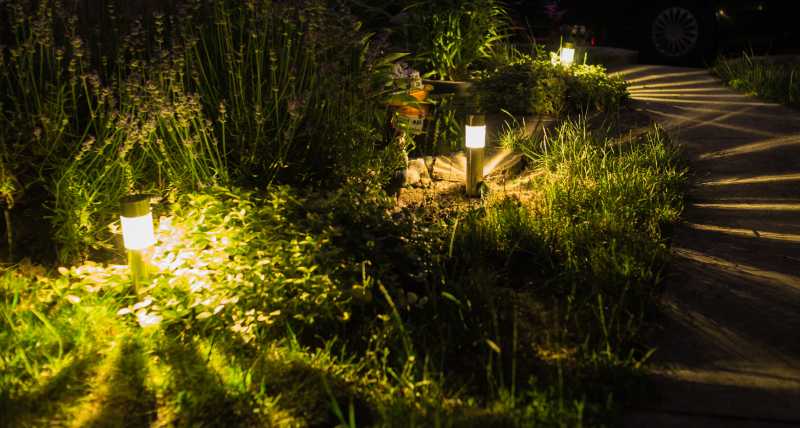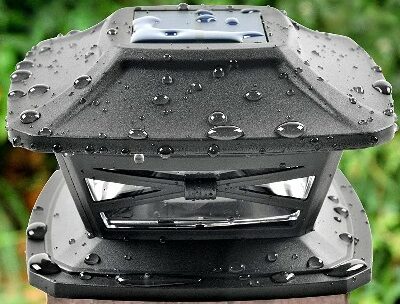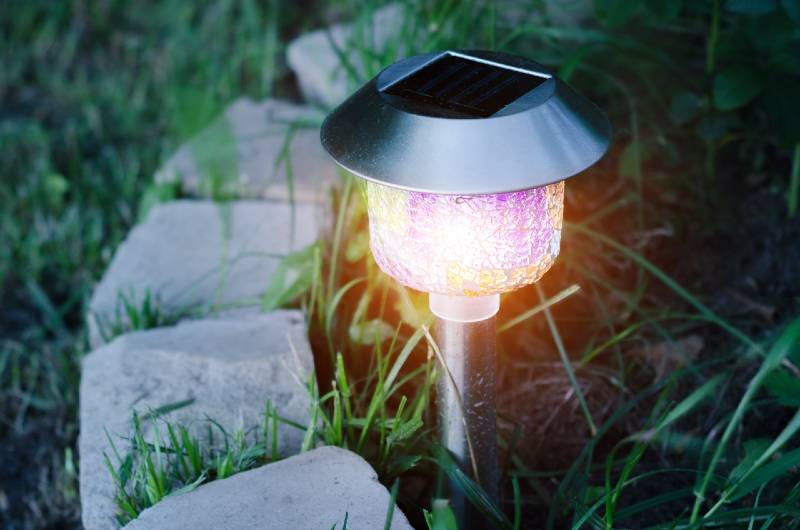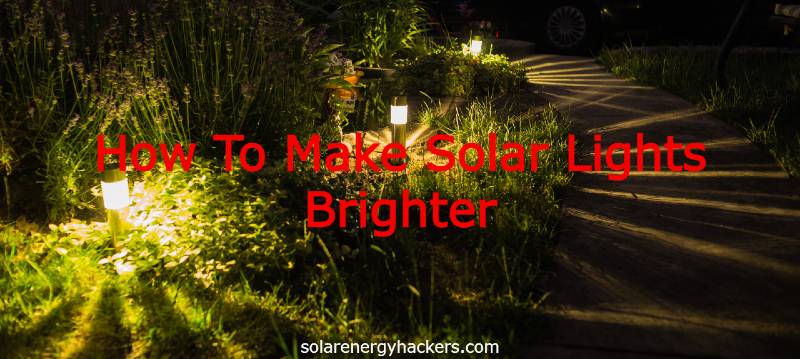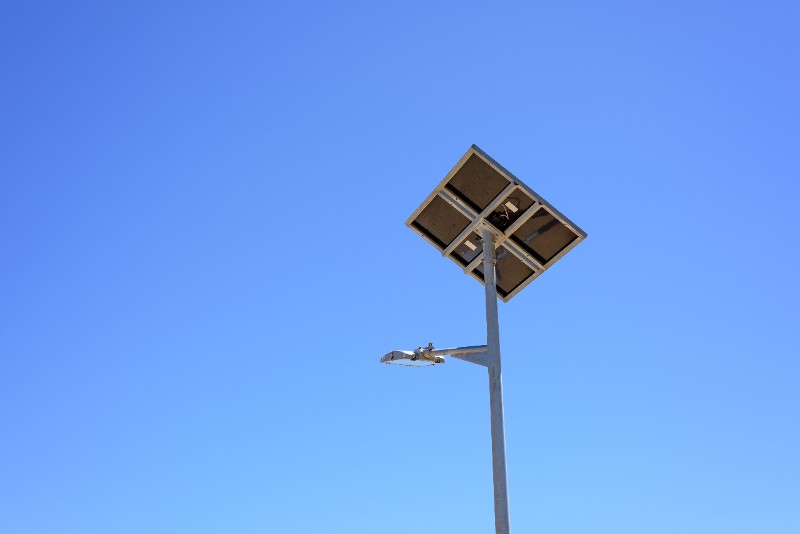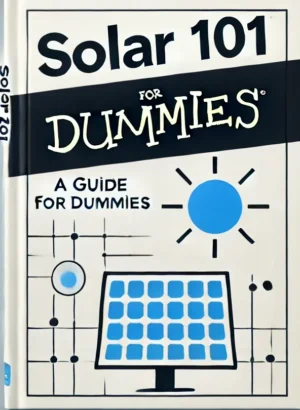DIY repairs and faulty wiring can turn anything into a fire hazard if not done right.
But when it comes to solar DIYs, can solar lights catch fire?
The short answer is yes.
However, this is not a common occurrence if proper precautions are taken.
So, in this guide, I’ll explain the potential risks, show you how to avoid common pitfalls and provide tips to ensure your solar lights are safe and efficient.
Key Takeaways
- Solar lights can catch fire due to battery issues, faulty wiring, and inferior materials.
- Battery-related problems, especially with lithium-ion batteries, are a common fire hazard in solar lights.
- Faulty wiring and DIY repairs can increase the risk of fires in solar lights.
- Choosing high-quality solar lights with good materials and safety features can significantly reduce fire risks.
- Regular maintenance, proper placement, and safe handling of batteries are essential to keeping solar lights safe and efficient.
Related Article: How Do Solar Powered Lights Work
What Causes Solar Lights to Catch Fire?
1. Battery-Related Issues
Sometimes we overlook just how much is going on inside a battery.
It’s like a little box packed with chemical and physical stuff that can be pretty intense.
This is why batteries, especially the ones in solar lights, can be a fire hazard.
Take lithium-ion batteries, for example—they’re common in solar lights because they can hold a lot of energy in a small space.
But within that space, they’re working with some reactive chemicals, including a flammable liquid called electrolyte.
If the battery gets damaged and this stuff leaks out, it could catch fire if it touches something like dry leaves or paper.
And then there’s the risk of the battery getting too hot.
This can lead to something called thermal runaway, where the heat causes more heat… and then even more heat, until it’s hot enough to start a fire.
This kind of problem is more likely if the battery is left in the sun for too long, overcharged, or just not made very well.
That’s why many of the best solar lights have these clever gadgets called smart controllers.
These controllers keep an eye on how hot the battery is and how much charge it’s holding.
If things start to look a bit dicey, they can dial back the power or shut off the lights completely to cool things down.
2. Faulty Electrical Wiring
Remember at school when we learned about the importance of doing things right, especially with tricky stuff like electricity?
Well, the same goes for the wiring in your solar lights.
Faulty wiring can be a serious fire hazard.
If the wiring isn’t done properly, or if someone who’s not quite skilled tries fixing it, you could end up with a real problem where your lights might just catch fire.
When you dive into a DIY project, it’s fun to get your hands dirty and try fixing things yourself.
But with electrical components, you’ve got to be extra careful because a small mistake can lead to big problems, like fires.
3. Compromises with Inferior Materials
I get that sometimes we need to watch our spending and go for the more wallet-friendly choices.
But, you know, when it comes to solar lights, picking the cheapest option can be pretty risky.
These budget-friendly versions usually use parts that aren’t that tough or high-quality, and they might not even be fire-resistant.
They also tend to skip out on crucial safety features that keep the charge under control and stop the batteries from getting overloaded.
When you opt for these cheaper materials, there’s a much higher chance that your lights could end up burning or even catching fire.
This is why I always recommend balancing cost with quality.
For example, you can choose solar lights that are a bit more expensive but come with certifications or guarantees about their build quality and safety standards.
How to Reduce the Risk of Solar Lights Catching Fire?
1. Choose High-Quality Solar Lights
As I just mentioned, picking high-quality solar lights is about more than just brightening up your yard; it’s a key move to cut down on fire hazards.
Sure, they might hit your wallet a bit harder at the checkout, but you’re paying for materials that last longer and resist fire.
That means they can handle all kinds of weather without breaking down or causing electrical shorts or battery issues, which are common fire starters.
Plus, these top-notch lights come packed with some smart safety features like overcharge protection, systems to manage heat, and automatic shut-offs.
These aren’t just fancy extras—they’re crucial for keeping things cool and running smoothly, greatly lowering the risk of any fire-related mishaps.
Then there’s the battery quality.
The better the battery, the safer your setup.
High-quality batteries don’t just leak less or avoid overheating; they also keep their charge better, which means they’re less likely to get overcharged—a big reason why fires can start in the first place.
What’s more, the makers of these quality lights usually prove their commitment to safety with certifications and warranties.
This isn’t just about making you feel good; it’s solid proof that they stand behind their products’ safety and longevity.
And let’s not forget the design itself.
High-quality solar lights are designed not just to look good but to be safe.
They’re built with better heat dissipation, seals that keep moisture out, and sturdy electrical connections—all of which help minimize fire risks.
2. Ensure Adequate Ventilation and Strategic Placement
Just like in your kitchen, where you wouldn’t jam all your appliances together because they might overheat, setting up your solar lights needs a bit of thought too.
It’s all about keeping them cool and safe.
You want to keep them away from places that get hot, like near your barbecue grill or right by heating vents.
And watch out for leaves or any debris piling up around them because that stuff can trap heat.
Finding just the right spot is also key.
While you want your solar lights to catch enough sunlight during the day to charge up, you don’t want them baking under too much direct heat.
This balance is super important because too much heat can mess with the batteries.
And spacing?
Yeah, that matters a lot. If your lights are too close together, they won’t get enough air around them, and they’ll start to get hotter than they should.
Make sure there’s a good amount of space between each light to let air flow freely.
This not only helps keep them cool but also cuts down the risk of them overheating and maybe starting a fire.
3. Switch Off Lights When Not in Use
Switching off your solar lights when you don’t need them might seem like a tiny thing, but it can make a big difference.
Even though the risk of them catching fire while they’re on and not being used is low, turning them off helps a lot with keeping your lights in good shape for longer.
By turning them off, you’re easing up on the battery—this means less chance of it getting overcharged or worn out, which can lead to problems like overheating later on.
Plus, when you keep them off when not needed, they work better and safer when you do turn them on.
It’s a simple way to make sure the batteries stay charged just right, without draining or overworking them.
It’s also a smart move to save energy and keep everything running smoothly for a long time.
4. Safely Handle and Dispose of Lithium-Ion Batteries
To keep your solar lights running safely and avoid the battery issues we discussed earlier, it’s crucial to handle lithium-ion batteries correctly.
So, always follow the manufacturer’s instructions on how to charge, use, and store these batteries.
If they’re overcharged, or if they get too hot or too cold, it could seriously raise the risk of a fire.
This is because such extremes can damage the battery, leading to thermal runaway—a dangerous condition where the battery heats up so much it could ignite.
Now, when the time comes to dispose of these batteries, you need to be mindful about how you do it.
Tossing lithium-ion batteries into your regular trash is harmful to the environment and poses a fire risk at waste facilities.
Instead, it’s smarter to utilize local recycling programs designed to handle electronics and batteries safely.
These programs ensure that batteries are disposed of responsibly, reducing environmental impact and decreasing the likelihood of fires.
5. Maintain Solar Lights Regularly
Lastly, it’s important to get into a routine of checking and taking care of your solar lights, kind of like how you regularly check on other things around your home.
Every few weeks, why not take a little stroll around your yard?
Take a look at your outdoor solar lights and see how they’re doing.
Doing this regularly helps you catch any issues early before they turn into bigger problems.
When you’re doing your check-up, don’t also forget to do the sniff test.
It might sound a bit funny, but it works.
If a light seems a bit off, pick it up, take a closer look, and give it a sniff.
If it smells like burnt plastic, it’s probably time to swap it out for a new one.
But if it just smells like a mix of plastic and dirt, then it’s likely all good.
This quick check can save you from headaches later.
FAQs
Are Solar Lights Hazardous?
Solar lights are not hazardous if you use high-quality products and follow the manufacturer’s guidelines.
Do Solar Lights Burn Out?
Solar lights don’t burn out like traditional bulbs but can stop working if the battery or solar panel fails.
Conclusion
As promised, we’ve covered the potential fire hazards of solar lights, including battery issues, faulty wiring, and inferior materials.
We’ve also discussed how to reduce these risks through proper maintenance, high-quality materials, and strategic placement.
One unique piece of advice: always use a battery management system (BMS) in your solar lights.
A BMS can monitor and protect your batteries from overcharging and overheating, significantly reducing fire risks.
Join our solar microdosing newsletter and get bite-sized, easy-to-understand insights into the world of solar energy.
From how solar panels work to building your own DIY solar system, we’ve got you covered.



